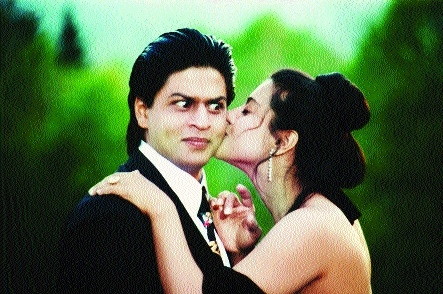Still romantic but out of sync with times
| Date :20-Oct-2020 |

By Radhika Sharma :
Packaging soft-focus romance within a rigid frame of patriarchy, the Dilwale Dulhania Le Jayenge love story unfolded in grassy Swiss meadows and Punjab’s mustard fields 25 years ago and went on to become a cult classic that combined desi sensibilities with NRI sensitivities. The film, one of India’s most successful, put Shah Rukh Khan and Kajol right up there as among Bollywood’s most popular onscreen pairs down the decades. It has withstood the test of time, with many viewers going back to rewatch it, and its love story is still fresh but also anachronistic and out of sync with contemporary realities, say some.
The Raj-Simran romance drama – not about lovers who dare all but more about conformists who love each other desperately and will get married only with their parents’ concurrence - released on October 20, 1995. And India woke up to romance DDLJ style, where the boy and girl, both London bred but ‘Indian’ at heart, barely hold hands, quite unlike the bolder, franker portrayal of relationships in Hindi cinema today. DDLJ shattered all box office records and is one of the biggest all-time blockbusters in the history of Hindi cinema. It also went on to become the longest-running Hindi film of all time as it has played in theatres for 25 long years! Kajol says, “I think DDLJ is timeless because everybody identifies somewhere down the line with Simran and with Raj. I think they just like these characters a lot! They have liked them for years and years now and it’s one of those things that you always like and probably will always like.” Talking about her director, Aditya Chopra, Kajol says, “I think what sets Adi apart is his conviction. He is very convinced of what he is making and doesn’t take on a project if he isn’t absolutely convinced about it. That really is what sets him apart.
He is not willing to let go off that basic core conviction that he has in his characters and he knows them best.” DDLJ is all about large-hearted non-resident Indian desis and their Indianness, shot in breathtaking locations with a soundtrack by Jatin-Lalit and Anand Bakshi to suit every mood and dialogues that went on to become even more popular in the digital age. Twenty-five years later, audiences still watch the film at Mumbai’s Maratha Mandir - till COVID-19 struck in March this year- but the views are as diverse as the first half of the film in London and Alpine locales from second in a rambunctious family in a Punjab village. According to senior film critic Saibal Chatterjee, the movie inaugurated “the era of the designer film made for NRIs”. The 1995 film, also starring the late Amrish Puri, Farida Jalal and Anupam Kher, released at a time when India had opened up to liberalisation. Chatterjee said the film looked fresh then but packaged old ways of living in a new sheen.
“It was about an NRI couple who live by their own rules, but at heart are completely Indian,” he told PTI. According to Chatterjee, DDLJ comes only after the 1975 hit Sholay for the influence it exercised on Hindi cinema. An entire generation of viewers has grown up in the last two decades but for some, the relevance of the film is based on that one vivid memory of when they first watched the film. Prema Maharish, 84, remembers going to see the film in a Mathura hall and remembers the dialogues verbatim. Her particular favourite is the stern father letting go off Simran’s hand in the climax with these words, Ja Simran Ja. Jee le apni zindagi. The film is a perfect blend of fairy tale fantasy and real life, according to government officer Rohit Sagar. However, Saipriya, a 17-year-old in Bengaluru, has little patience for the film and also finds the title problematic as she believes it objectifies women.
Jaipur-based Zubin Mehta echoes Saipriya’s sentiment about the movie’s patriarchal gaze but argues that DDLJ is still an entertaining watch. “It wasn’t made to be a perfect romantic movie,” the 30-year-old lawyer said. What happened to Raj and Simran after the train left the station is unknown, but an ambiguous ending is what makes ‘ever after’ happy, Chatterjee noted. “There is romance and hope in not knowing it. The woman has been set free and maybe she will have a brighter future. That’s what Hindi cinema is about, it’s about hope, not reality.” (PTI) n